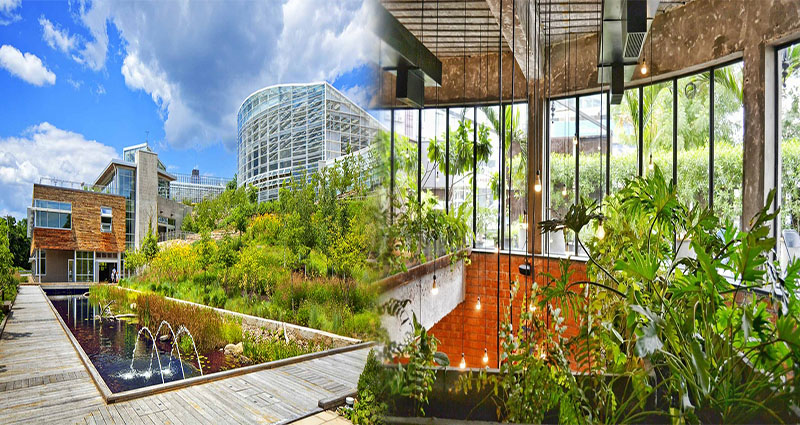Water conservation is a crucial aspect of green building design. Taking steps to reduce water usage can significantly contribute to a more sustainable future while also reducing costs associated with water treatment and delivery. In this article, we will explore some of the critical water conservation features in green building design.
1. Low-Flow Fixtures
Low-flow fixtures, such as showerheads, faucets, and toilets, can significantly reduce water consumption in buildings. The use of these fixtures ensures that water is used efficiently without compromising functionality or performance. Low-flow fixtures can reduce water usage by up to 50% compared to traditional fixtures.
2. Greywater Recycling Systems
Greywater recycling systems collect greywater from sinks, showers, and washing machines, and treat it for reuse in non-potable applications such as irrigation or toilet flushing. Implementing these systems can significantly reduce the demand for freshwater and reduce the amount of wastewater discharged to municipal systems.
3. Rainwater Harvesting Systems
Rainwater harvesting systems capture and store rainwater for future use in non-potable applications such as irrigation or toilet flushing. These systems can significantly reduce the demand for freshwater and reduce the amount of runoff that can cause water pollution and flooding.
4. Efficient Irrigation Systems
Efficient irrigation systems, such as drip irrigation or soil moisture sensors, can significantly reduce water usage for landscaping and help prevent overwatering. Drip irrigation delivers water directly to the plant root zone, reducing water waste through evaporation or runoff. Soil moisture sensors ensure that plants receive only the necessary amount of water, minimizing water usage and ensuring optimal plant growth.
5. Xeriscaping
Xeriscaping is a landscaping technique that involves using plants that are adapted to the local climate and require minimal water usage. By using drought-tolerant plants and reducing the amount of grass and turf, water usage for landscaping can be significantly reduced.
6. Permeable Pavement
Permeable pavement is a type of pavement that allows water to pass through it and be absorbed by the ground. This reduces runoff, prevents flooding, and helps recharge groundwater resources.
7. Water-Efficient Appliances
Water-efficient appliances, such as washing machines and dishwashers, use significantly less water than traditional models. These appliances can reduce water usage by up to 50%, significantly contributing to water conservation efforts.
8. Building Automation Systems
Building automation systems allow for optimized control and management of a building’s water consumption. By utilizing sensors and advanced controls, these systems can regulate water usage for irrigation, plumbing fixtures, and other water-consuming systems, maximizing efficiency and reducing waste.
Incorporating water conservation features in green building design is critical for reducing the ecological footprint of buildings. Implementing these features can significantly reduce water usage and contribute to a more sustainable future. As technology advances and awareness grows, water conservation features in green building design will continue to play a vital role in creating more eco-friendly buildings.












